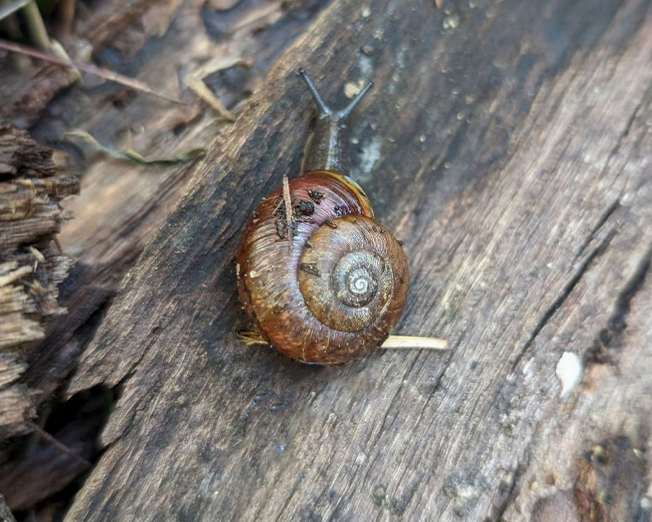Let’s be honest, snails often get a bad rap for not being as cute and cuddly as some of our other native fauna. To the untrained eye, the Cumberland Land Snail looks similar to the more commonly seen introduced European snail.
As stated by the NSW National Parks and Wildlife Service, “the Cumberland Plain land snail resembles the more familiar garden snail, a species introduced from Europe. Shell colour is the easiest way to tell the two apart. Whereas the exotic garden snail’s shell is patterned with dark patches on a pale background, the native Cumberland Plain land snail’s shell is one colour all over – though it can be any shade of brown.“
Currently listed as an endangered species, they primarily inhabit the Cumberland Plain Woodland (a critically endangered ecological community). With a relocation and conservation program currently underway, we are here to get the PR machine rolling for these unsung heroes.
One of the most vital roles of the Cumberland Land Snail is in nutrient cycling. These snails munch on decaying plant material, fungi, and other detritus, helping to break it down and recycle nutrients back into the soil. This process is essential for maintaining soil fertility, which supports the rich plant life in the woodland. Without these diligent decomposers, the nutrient cycle would slow down, and plant growth would suffer.
Despite their humble size, Cumberland Land Snails are a crucial food source for a variety of predators, including birds, mammals, and other invertebrates. By being a part of the diet of these creatures, the snails help maintain the balance of the woodland’s food web.
The presence of the Cumberland Land Snail is also a good indicator of the overall health of the Cumberland Plain Woodland. Changes in their population can signal shifts in environmental conditions, such as habitat quality, pollution levels, or the impacts of climate change. In fact, they will even dig several centimetres into the soil to protect themselves from drought.
Both the Cumberland Plain Woodland and the Cumberland Land Snail are considered threatened, making their conservation a high priority. Protecting these snails is part of broader efforts to conserve this unique and diminishing habitat. By focusing on their preservation, we help ensure the survival of a myriad of other species that depend on this ecosystem.

There is no doubt that there is more than meets the eye when it comes to the Cumberland Land Snail! If you’d like to know more about our services, you can get in touch with us here.

We are a team of people dedicated to the protection of our natural spaces and native species.We deliver environmental management and reporting services.
Habitat Solutions acknowledges the Traditional Custodians of the land on which we work, live, and come together. We pay our respects to Elders past, present and emerging. We celebrate the stories, culture and traditions of Aboriginal and Torres Strait Islander Elders of all communities who also work and live on this land.
Habitat Solutions Co © 2025 | A division of Solutions Group ANZ.